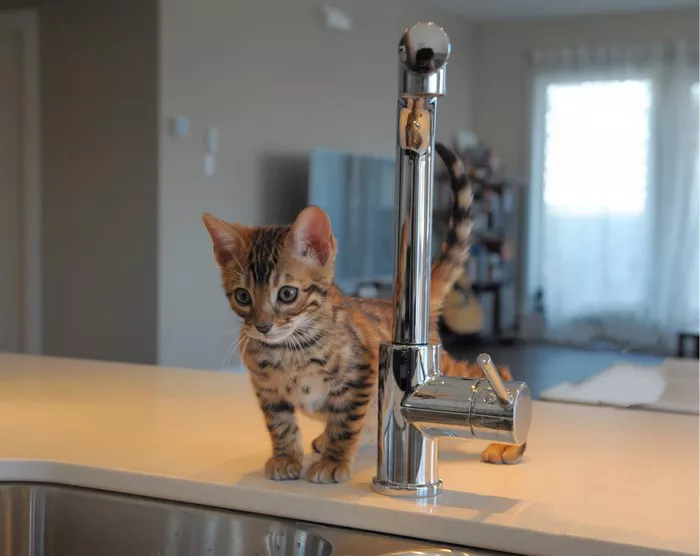Ragdoll cats, known for their striking blue eyes, semi-longhair coats, and docile nature, are a beloved breed among cat enthusiasts. As pet owners, the question of whether to bathe these majestic felines often arises. In this comprehensive guide, we delve into the considerations, benefits, and best practices regarding bathing Ragdoll cats, unraveling the mysteries of maintaining their unique coats and ensuring their overall well-being.
Understanding the Ragdoll Cat Breed
Before delving into the bathing dilemma, it’s essential to grasp the characteristics that define Ragdoll cats. Renowned for their placid temperament, Ragdolls are a semi-longhair breed with a silky, luxurious coat that comes in various color patterns, including colorpoint, mitted, and bicolor.
Coat Texture: Ragdoll cat coats are low-maintenance due to their silky texture, which resists matting and tangling. This characteristic makes them relatively easy to groom.
Color Points: The distinctive color points on Ragdolls, with darker shades on the ears, face, paws, and tail, are a hallmark of the breed. Preserving these color points contributes to their aesthetic appeal.
Personality: Ragdolls are known for their gentle and affectionate demeanor. Their calm nature and tendency to go limp when picked up contribute to the name “Ragdoll.”
To Bathe or Not to Bathe: Considerations for Ragdoll Cats
The decision to bathe a Ragdoll cat involves careful consideration of several factors, including their grooming needs, individual characteristics, and any health-related concerns.
Grooming Habits: Ragdolls are generally meticulous groomers and often maintain their coats well without assistance. Regular brushing, at least a few times a week, helps prevent matting and reduces shedding.
Allergies and Sensitivities: Some cats may develop skin sensitivities or allergies that necessitate bathing. However, Ragdolls are not known for skin issues, making frequent baths less of a requirement.
Health Concerns: Ragdoll cats are generally healthy, but certain conditions or situations may warrant bathing. For instance, if a cat gets into something sticky or dirty, a bath may become necessary.
Benefits of Bathing Ragdoll Cats
While Ragdolls are adept at self-grooming, occasional baths can offer specific benefits, contributing to their overall well-being and the preservation of their stunning coats.
Coat Hygiene: Bathing helps maintain the cleanliness of the coat, especially for indoor cats that may encounter dust or debris. It removes loose hair, preventing matting and reducing shedding.
Allergen Reduction: Regular baths may reduce allergens present in the cat’s fur, potentially benefiting individuals with cat allergies.
Bonding Opportunity: When approached positively, bathing can become a bonding experience between the cat and the owner. Establishing trust during grooming activities fosters a positive relationship.
Best Practices for Bathing Ragdoll Cats
If circumstances necessitate bathing a Ragdoll cat, employing the right techniques and ensuring a positive experience is paramount. Follow these best practices to make the bathing process smoother for both you and your feline companion:
1. Use Cat-Friendly Shampoo: Select a gentle, cat-specific shampoo to avoid skin irritation. Human shampoos can be harsh on a cat’s sensitive skin.
2. Prepare the Environment: Create a calm and safe bathing environment. Use a shallow, non-slippery basin, and have all necessary supplies within reach before starting.
3. Gentle Introduction to Water: Gradually introduce the cat to water, starting with their paws. Use lukewarm water to ensure their comfort.
4. Positive Reinforcement: Offer treats and positive reinforcement throughout the process to associate bathing with positive experiences.
5. Avoid the Face: Cats are generally averse to having their faces wet. Avoid wetting the face and ears as much as possible.
6. Drying Carefully: Use a soft, absorbent towel to gently dry the cat after the bath. Ensure they are entirely dry to prevent chilling.
Conclusion
In the ongoing debate of whether to bathe Ragdoll cats, the consensus leans toward a cautious approach. While Ragdolls are adept self-groomers and generally do not require frequent baths, there are situations where a bath may become necessary for their well-being.
Understanding the individual needs of your Ragdoll cat, monitoring their grooming habits, and considering any health-related concerns are essential factors in making the bathing decision. When approached with patience, positive reinforcement, and the right techniques, bathing can become a positive experience that contributes to the overall health and happiness of your Ragdoll companion.


























